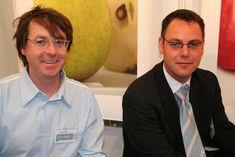
HortResearch, the New Zealand-based fruit science company, is investing €3.5 million a year to uncover the biochemical secrets of fruit growth and help create significant opportunities for the fruit industry.
The company’s Fruit Genomics Programme explores fruit at a molecular level, studying its genes, the proteins they produce and the role those proteins play in the natural chemical reactions found in living organisms. These reactions are responsible for a host of activities, including how a tree grows, its resistance to pests and disease and its appearance, texture, taste and smell.
“We’re looking at why fruit develops, why one fruit develops to be an apple, or a pear, why it is red, or green, why it tastes the way it does, why it grows the way it does,” said Roger Bourne senior communications advisor at HortResearch, pictured right. “The reason is that within that info lie the keys to breeding, new, better, novel, more interesting, more healthy fruit varieties faster, and being able to offer the fruit industry products which grow better or offer more resistance to disease, and offer that as a reality much sooner than using the traditional breeding process.”
Programme leader Dr Roger Hellens, above left, added: “It just means that the probability of getting a fantastic apple that’s going to captivate the consumers is all that more probable.”
But as well as consumer traits, growers could greatly benefit from breakthroughs, Bourne said: “Growers will be worried about fruit set because winter’s not been so cold, for example. But potentially, that’s something genomics can help with in terms of finding and helping breed varieties that don’t need such winter chill.”
However, encouraging the industry to invest in such long-term goals was still a challenge, according to chief executive Paul McGilvary: “They all have limited budgets and resources. What we can do as a research organisation is we can take some of the money they put into us and we can leverage it with government money and we can also leverage it by collaborating.”



